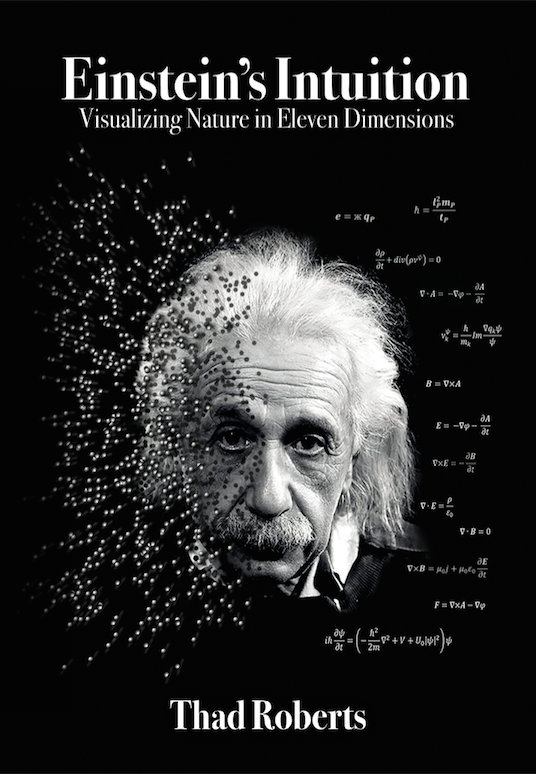Lately I’ve been reading a fascinating book by Thad Roberts (former NASA Physicist) entitled: Einstein’s Intuition: Visualizing Nature in Eleven Dimensions. Although I didn’t agree with somethings in the book. It did have very interesting things to say about discrete space that I think many will find fascinating amongst other things.
Thad points out that Hendrik Casimir predicted that the Vacuum of space wasn’t empty but that quantum fluctuations of space caused a pressure that couldn’t be explained by gravity. This was experimentally verified in 1997 by Steve Lemoreaux. Thus this shows that these quantum fluctuations are caused by interactions of underlaying molecules or atoms “that compose the medium of space“.1
Lamb shift also shows that the vacuum contains zero point energy (not to be confused with no energy at all) similar to vibrating molecules, as that would explain how it can alter frequencies of light that hydrogen atoms absorb and emit. Thus contrary to its misleading name the Quantum Vacuum is not empty.2
As I once quoted David Bohm:

Thad points out that Theodore A. Jacobson and Renaud Parentani showed that sound propogating through an uneven fluid flow is very much like when light is curved in General Relativity suggesting that space is granular like a material fluid flow.
Black holes as singularities are in conflict with a continuous view of space as it “demands discontinuity in the fabric of spactime.”4
Moreover both Quantum Theory and Relativity say different things about radiation emissions from a black hole.
In Relativity it would be infinitely stretched as it propagates away which assumes that space is continuous and thus infinitely divisible. However if we take space as discrete say granular it can be depicted like a fluid system and thus reconciles them by getting rid of the infinite stretching thus having a cutoff. So like Quantum Theory it can just emit the radiation.5
In addition, having a discrete space gets rid of any claims of problems with an infinite divisibility of space due to having minimum limits in which space would be no more and this is supported by the Plank constants (length, mass, time, charge, temperature. By Plank, Thad usually refers to the one denoted by the symbol h-bar not h. The latter of which is usually used in applied or optical physics and is sometimes referred to as “the reduced Plank constant and Dirac’s constant“)6 which give minimum limits of space. The plank length is unique in being the only length that could naturally appear in Quantum Gravity.7
The Earth also receives to much ultra high-energy cosmic rays in disagreement with predictions of Special Relativity based on a continuous view of space. However this can easily be answered by a discrete view of space as argued by Amelino-Camelina as “‘graininess’ would ease the passage of high-energy particles.”8

The Philosopher William Lane Craig has also said:
So contrary to objectors it isn’t a discrete view of space which has an infinite divisibility problem this is an issue for continuous space.
Even more as Craig points out the divisibility of space is a potential not actual infinite as space expands limitlessly.
Aristotle argued that the interval or line is conceptually prior to any divisions we make of it and thus one need not assume an actual infinity of spatial points and good reason to reject it as anywhere instantiated in the physical world. Moreover the intervals are unequal which also assumes these infinite prior points in divisibility.10
As we have seen it’s actually a continuous view of space such as in a 4-Dimensional instead of a discrete 3+1 view that leads to physical and philosophical problems contra claims.11
1Einstein’s Intuition. 32,33.
2ibid. 37. footnote 13.
3Tom Butler Bowden, 50 Philosophy Classics. 66.
4Einstein’s Intuition. 33,34.
5ibid. 34,37. footnote 16. pg. 236-238 also.
6ibid. 246. footnote 11.
7ibid. 34.
8ibid. 65.
10The Blackwell Companion to Natural Theology, 115-124. See also: https://youtu.be/i08-gCue7Ds skip about 25 minutes in.
11For more information and Thad’s book see: http://einsteinsintuition.com and https://www.amazon.com/Einsteins-Intuition-Visualizing-Nature-Dimensions/dp/0996394249/ref=redir_mobile_desktop?_encoding=UTF8&ref_=dbs_a_w_dp_0996394249. Thanks to Thad for allowing me to use his book cover and his willingness to answer questions on his work.